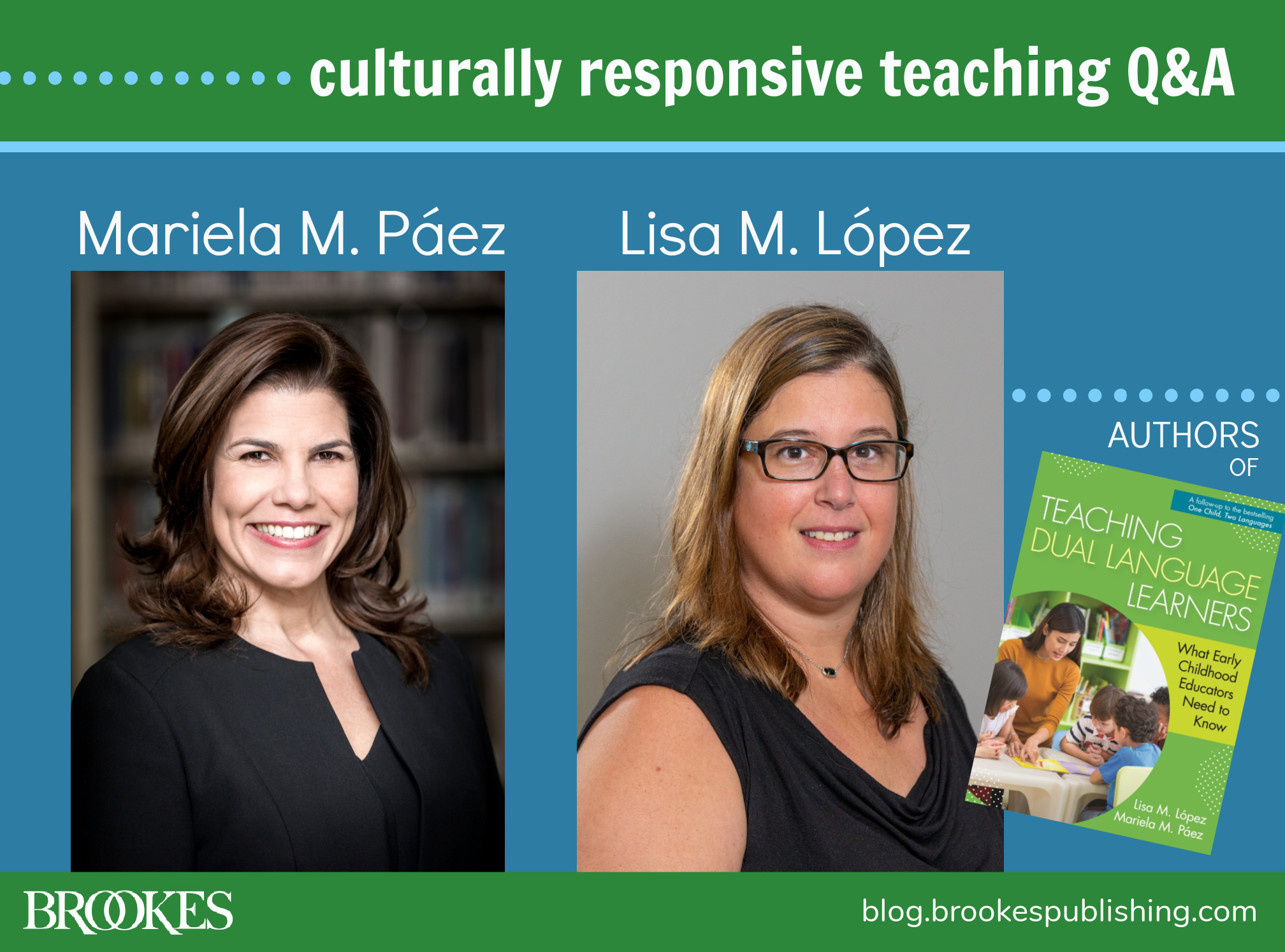10 Teacher Tips for Conducting Home Visits with Diverse Families
March 28, 2023
 In their book Differentiating Instruction and Assessment for English Language Learners, Shelley Fairbairn and Stephaney Jones-Vo discuss an effective way to learn more about diverse students and families: through home visits. If your school allows it, home visits are a good way to build stronger relationships with students and families, increase cultural understanding between both parties, and encourage family engagement with the school. Today’s post shares some teacher tips on successful home visits from Fairbairn and Jones-Vo, adapted from their book.
In their book Differentiating Instruction and Assessment for English Language Learners, Shelley Fairbairn and Stephaney Jones-Vo discuss an effective way to learn more about diverse students and families: through home visits. If your school allows it, home visits are a good way to build stronger relationships with students and families, increase cultural understanding between both parties, and encourage family engagement with the school. Today’s post shares some teacher tips on successful home visits from Fairbairn and Jones-Vo, adapted from their book.
 Plan your visit carefully. Consider the purpose of your visit when planning the length of your stay, bearing in mind that a quick 10-minute first visit may be viewed as rude. If the purpose is to meet the family members and invite their participation in the educational process, take along materials for meaningful activities and discussions. You might want to bring along pertinent school materials and forms, and (if possible) provide new students with school supplies. (Many community and civic organizations may be interested in providing support by making donations of needed items to help ELLs and their families adapt to their new home.)
Plan your visit carefully. Consider the purpose of your visit when planning the length of your stay, bearing in mind that a quick 10-minute first visit may be viewed as rude. If the purpose is to meet the family members and invite their participation in the educational process, take along materials for meaningful activities and discussions. You might want to bring along pertinent school materials and forms, and (if possible) provide new students with school supplies. (Many community and civic organizations may be interested in providing support by making donations of needed items to help ELLs and their families adapt to their new home.)
Find out if gift-giving is an expectation. A small token might be appropriate during an initial home visit to convey the teacher’s good intentions. It’s important to find out what constitutes an appropriate gift in this context, so ask your students, community leaders, school personnel, and other cultural brokers in the community. For example, Stephaney Jones-Vo took coffee beans and chocolate to the home of a grieving Eastern European family that had experienced a death in the family. She learned of the necessity of these particular gifts from a bilingual paraeducator familiar with the community.

Observe others to avoid cultural missteps. Should you remove your shoes as you enter the home? Note whether your host is wearing shoes in the home, and if you are unsure, err on the side of caution and leave your shoes with the other shoes near the door. Follow your host’s lead regarding where to sit during the visit. This precaution can prevent a faux pas such as sitting in the position reserved for the head of the home. If refreshments are served, watch others to learn the protocol for eating or drinking, and take sparing portions of new foods to prevent waste. Consider the fact that a flat refusal of any food or drink offered may indicate a lack of openness to the culture and, therefore, to the family.
Take note of the environment. During the home visit, conduct an informal environmental scan to better understand your students’ context at home. Notice the general surroundings and cultural artifacts, such as religious symbols, handmade textiles, pictures from the home country, and so on. Also notice the print materials in the home, like books, magazines, and lists on the refrigerator. Are these materials in English or the home language? Observations like these can help you gain insight into the importance of reading in the family’s daily activities, and in what languages.
 Allow for differences in communication styles. Communication styles may be more direct or indirect, depending on culture. To avoid miscommunication, these differences in style must be considered when interacting with those from different cultural and language backgrounds. Individuals with a less direct style may also need interpretation—for example, a parent’s seemingly casual comment about not having a car may be a request for a ride to a school event.
Allow for differences in communication styles. Communication styles may be more direct or indirect, depending on culture. To avoid miscommunication, these differences in style must be considered when interacting with those from different cultural and language backgrounds. Individuals with a less direct style may also need interpretation—for example, a parent’s seemingly casual comment about not having a car may be a request for a ride to a school event.
Pay attention to the power structure. Observe which family member assumes a lead role during your visit, who participates in the meeting, and who remains silent. Some teachers mistakenly assume that it is appropriate to direct conversation equally to both parents, whereas the culture may be patriarchal or matriarchal, rather than egalitarian, in this respect. Understanding the visible indicators of cultural values within a family will assist you in meeting your student within their context.
Consider the purpose of pauses. During home visits, you may encounter long pauses or periods of silence. Observe your hosts to understand the meaning of these pauses—they may not indicate a problem or a desire for the visit to end.
 Don’t take offense at “distractions.” Many normal home activities can be seen as distractions to a visitor. It is possible that the television may be turned on or that other children may interrupt the discussions and activities planned by the teacher. These distractions may not indicate that the home visit is over or unwelcomed by the hosts. A productive visit may still be possible, particularly if your hosts do not seem distracted by the activity. As the guest, it is important not to take offense at distractions or allow them to disrupt your visit.
Don’t take offense at “distractions.” Many normal home activities can be seen as distractions to a visitor. It is possible that the television may be turned on or that other children may interrupt the discussions and activities planned by the teacher. These distractions may not indicate that the home visit is over or unwelcomed by the hosts. A productive visit may still be possible, particularly if your hosts do not seem distracted by the activity. As the guest, it is important not to take offense at distractions or allow them to disrupt your visit.
Collect information efficiently. Home visits can be a productive time for completing necessary tasks and paperwork. As always, this effort calls for cultural sensitivity. It’s helpful to have forms like these translated into the appropriate languages:
- Accurate and detailed contact information
- Enrollment forms, including registration forms and immunization documentation
- Free or reduced-cost lunch application forms
- Information on students’ previous schooling and home language literacy practices
- Information about household structure and home environment
Reinforce the importance of the home language. Don’t insist, or recommend, that parents speak English to their children. Doing so can cause breakdowns in family communication when children learn to speak English more quickly than their parents. Instead, encourage students and their families to maintain their home languages and cultures, thus supporting appropriate dynamics in parent–child interactions. Maintaining the home language is also important to content and literacy learning in English for ELLs.
 Use these tips to guide your visits with families, and pick up the book Differentiating Instruction and Assessment for English Language Learners for much more guidance on working with culturally and linguistically diverse students!
Use these tips to guide your visits with families, and pick up the book Differentiating Instruction and Assessment for English Language Learners for much more guidance on working with culturally and linguistically diverse students!
Reference
Ting-Toomey, S. & Chung, L.C. (2012). Understanding Intercultural Communication. New York, NY: Oxford University Press.




Write a Comment
Your email address will not be published. Required fields are marked *
Post a Comment